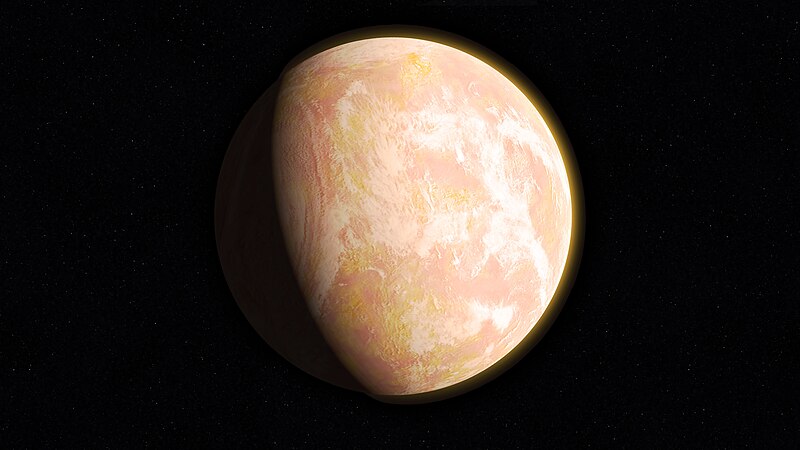NASA-EarlyEarth-PaleOrangeDot-20190802.jpg

Size of this preview:
800 × 450 pixels
.
Other resolutions:
320 × 180 pixels
|
640 × 360 pixels
|
1,024 × 576 pixels
|
1,280 × 720 pixels
|
2,560 × 1,440 pixels
|
3,840 × 2,160 pixels
.
Summary
| Description NASA-EarlyEarth-PaleOrangeDot-20190802.jpg |
English:
When haze built up in the atmosphere of Archean Earth, the young planet might have looked like this artist's interpretation - a pale orange dot. A team led by Goddard scientists thinks the haze was self-limiting, cooling the surface by about 36 degrees Fahrenheit (20 Kelvins) – not enough to cause runaway glaciation. The team’s modeling suggests that atmospheric haze might be helpful for identifying earthlike exoplanets that could be habitable.
|
| Date | |
| Source | https://www.flickr.com/photos/gsfc/32407459560 ; see also https://www.nasa.gov/feature/goddard/2019/shining-starlight-on-the-search-for-life and https://www.nasa.gov/feature/goddard/2017/nasa-team-looks-to-ancient-earth-first-to-study-hazy-exoplanets |
| Author | NASA/Goddard Space Flight Center/Francis Reddy |
Licensing
| Public domain Public domain false false |
|
|
This file is in the public domain in the United States because it was solely created by NASA . NASA copyright policy states that "NASA material is not protected by copyright unless noted ". (See Template:PD-USGov , NASA copyright policy page or JPL Image Use Policy .) |

|

|
Warnings:
|
Captions
NASA - Early Earth - Pale Orange Dot - August 2, 2019
